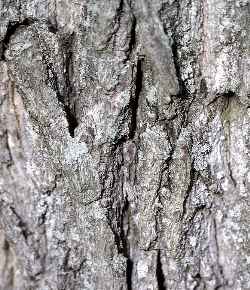
Juglans nigra, Britton, N.L., and A. Brown. 1913. Illustrated flora of the northern states and Canada. Vol. 1: 579.
Sunset®: 1-9,14-21
USDA: 4-10
Sun Exposure: Full sun
Origin: Eastern North America, southeastern New Brunswick to northern Mississippi
Growth Habits: Deciduous tree, 50 to 75 feet tall (15-23 m) or more; alternate, odd-pinnately compound leaves, with the terminal leaflet missing or misshaped, 12 to 24 inches long (30-60 cm), with 10 to 23 serrated leaflets, 3 to 5 inches long (7.5-12.5 cm), odoriferous when bruised
Flowers: Light yellow or greenish flowers
Watering Needs: Moist, well drained soils, relatively drought resistant
Propagation: Named varieties are grafted on same species seedlings
Propagation: Seed or occasionally cutting, layering, grafting/budding
- by softwood, hardwood stem tip cuttings, in winter. Apply IBA TALC 8000 PPM. Use intermittent mist. Root in 6-8 weeks. Wound cuttings..
- by air, trench layers, in late winter. remove a ring of bark.
- by whip, 'T' grafts. Use a J. Hindsii or Paradox Hybrids as graftstock. The best time for grafting/budding for whip is Spring and for 'T' is Autumn. Seedlings are cut off 10-14 days before grafting for the sap to dry. When the grafter begins seedlings are cut 1-2 inches to remove the dry surface.
- by seeds, in spring. Germinates at 70-85 degrees F. The seeds can be harvested in autumn. The seeds need stratify 40F 4-5mo.. The usual germination temperature is 70-85 degrees F.

Juglans nigra bark, Robert H. Mohlenbrock. USDA NRCS. 1995. Northeast wetland flora: Field office guide to plant species.
Blooming Habits:
The male flowers are long catkins, 2.4 to 5.6 inches long (6-14 cm). The female flowers are yellowish green, on short spikes, close to the end of the twigs. The black walnut blooms in the spring (April to June).
Fruiting Habits:
The fruit is a round nut, 1 to 1.6 inches in diameter (2.5-4 cm), containing a tasty, oily seed, ripening in the fall (September-October). It is surrounded by a very hard thick shell. The trees start producing seeds when they are about 20 years old.
Culture:
The black walnuts are difficult to transplant because of their long tap root. They secrete a substance (juglone) that prevents close-by plants to grow.
Desert-Tropicals is dedicated to provide gardening advice, gardening ideas, and information about flower of all kind for landscape and collections.We try to check carefully the identification of the plants on the illustrations as well as the other information from the page, but occasionally errors do occur. if you notice anything that needs to be changed please contact us.Thanks.
© 1998-2020 Philippe Faucon, All Rights Reserved.